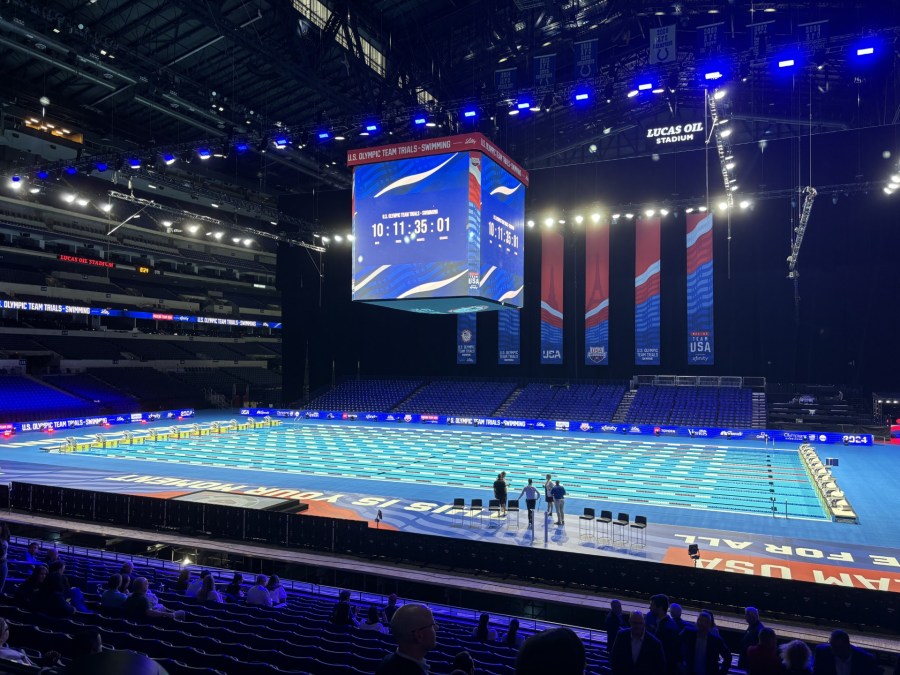From the White River to world records: The journey of the U.S. Olympic Swim Trials pool water

INDIANAPOLIS — Inside the two Olympic-sized pools in Lucas Oil Stadium right now are two million gallons of some of the fastest water around.
The competition pool has already seen a world record and an American record broken in the crystal clear water, but that H2O didn’t always look like that.
This same time last month, the water was most likely floating around in the White River somewhere. But it eventually became part of the tens of millions of gallons going into Indy’s water supply.
”The water in those U.S. Olympic-sized pools came from the White River,” said Ben Easley, a spokesperson for Citizens Energy Group.
As he spoke about the Olympic pools, Easley stood in front of several more millions of gallons of water at the White River Water Treatment Plant.
”This plant can do up to 120 million gallons treated and processed and pushed into the distribution system for your customers each and every day,” Easley said.
Water going through the plant goes through a thorough cleaning process in several stages, including strong UV lights to destroy any leftover organisms. These processes bring it up to drinking water quality, and it can be sent out to wherever.
”We’ll then push it out to your distribution process,” Easley said. “That then goes to your sink, to your toilets, to the fire hydrant in your community or to the Olympic-sized pool for records to be broken.”
Just a few weeks ago, crews got up early to take the water from underground pipes into Lucas Oil Stadium. It all came out of a sole fire hydrant right outside the stadium on Capitol Avenue.
”We had a hose that we were able to plug onto that hydrant, open the hydrant and then we had nice scaffolding for that hose to go inside the facility and into that pool,” Easley said.
From there, the team at Myrtha Pools took over the water and prepared it for the world-class swimmers trying to make the U.S. Olympic Swim Team.
John Ireland, the Chief Technical Officer with Myrtha, said grabbing all the water from an outside hydrant isn’t all that common, but it gets the job done.
”It was super high quality water,” Ireland said. “It made our jobs really easy to get the pool prepared for the swimmers. Came in actually really pretty warm as well, so we didn’t have to spend that much time heating it.”
Two million gallons all at once might seem like a lot, but Easley said it’s a drop in the bucket.
”It did not impact anyone’s water pressure because two million gallons, even though it sounds like a lot, is not a whole lot in terms of what we can produce,” Easley said. “On average, we produce about 127 million gallons each and every day for our central Indiana customers.”
Once the trials are over Sunday night, the water will head back to where it all started. The water will be drained into the sewage system like most wastewater is, except this water returns cleaner than when it come out of the facility.
”It will go through our waste water collection system down to the Belmont facility on the south side of the city, and then it goes through a similarly rigorous treatment process before it’s safely then released back into the White River,” Easley said.
The former Olympic swim trials water will flow south down the White River out of Indianapolis after it leaves the treatment plant. But other communities further south rely on the White River for their water, making it very possible that somebody in southern Indiana could one day drink former Olympic Trials pool water.

Comments are closed.